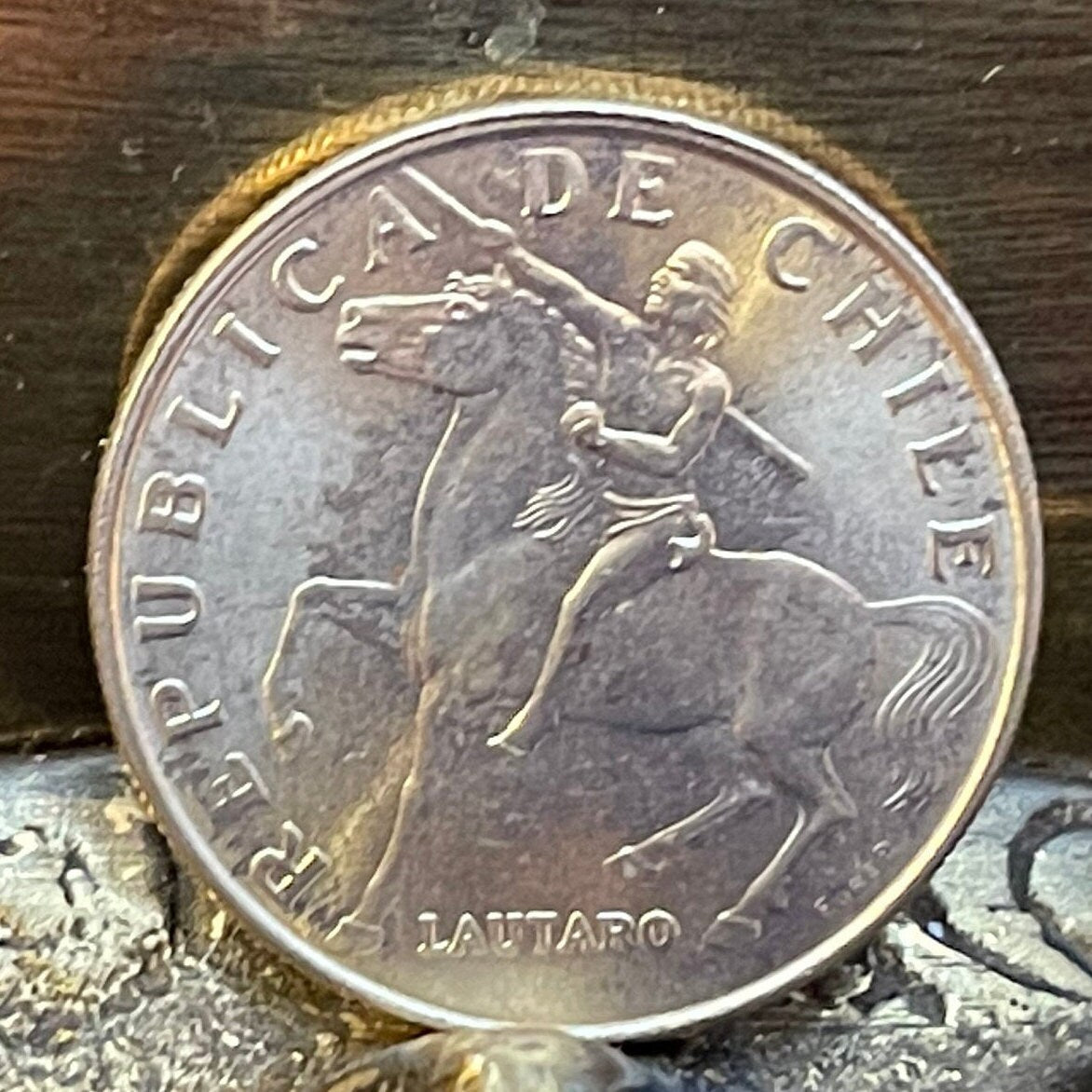elemintalshop
Lautaro 5 Escudos Chile Authentic Coin Money for Jewelry and Craft Making (Freedom Fighter)
Lautaro 5 Escudos Chile Authentic Coin Money for Jewelry and Craft Making (Freedom Fighter)
Couldn't load pickup availability
Lautaro 5 Escudos Chile Authentic Coin Charm for Jewelry and Craft Making (Freedom Fighter)
Obverse: Lautaro on a horse (about 1535-1557), one of the most famous Mapuche military leaders who opposed the Spaniards when they arrived in Chile.
Lettering: REPUBLICA DE CHILE
LAUTARO
Translation: Republic of Chile
Lautaro
Reverse
The arms of Chile with the denomination below
Lettering: POR LA RAZON O LA FUERZA
5 ESCUDOS
Translation: By Right or Might
5 Escudos
Features
Issuer Chile
Period Republic (1818-date)
Type Standard circulation coin
Years 1971-1972
Value 5 Escudos (5)
Currency Escudo (1960-1975)
Composition Copper-nickel
Weight 4.53 g
Diameter 23.03 mm
Thickness 1.6 mm
Shape Round
Technique Milled
Orientation Coin alignment ↑↓
Demonetized 29 September 1975
Number N# 4330
References KM# 199
Wikipedia:
Lautaro (Mapudungun: Lef-Traru "swift hawk") (Spanish pronunciation: [lawˈtaɾo]; 1534? – April 29, 1557) was a young Mapuche toqui known for leading the indigenous resistance against Spanish conquest in Chile and developing the tactics that would continue to be employed by the Mapuche during the long-running Arauco War. Lautaro was captured by Spanish forces in his early youth, and he spent his teenage years as a personal servant of chief conquistador Pedro de Valdivia, but escaped in 1551. Back among his people he was declared toqui and led Mapuche warriors into a series of victories against the Spanish, culminating in the Battle of Tucapel in December 1553, where Pedro de Valdivia was killed. The outbreak of a typhus plague, a drought and a famine prevented the Mapuche from taking further actions to expel the Spanish in 1554 and 1555. Between 1556 and 1557, a small group of Mapuche commanded by Lautaro attempted to reach Santiago to liberate the whole of Central Chile from Spanish rule. Lautaro's attempts ended in 1557 when he was killed in an ambush by the Spanish.
Today, Lautaro is revered among Mapuche and non-Mapuche Chileans for his resistance against foreign conquest, servitude and cruelty.
********
Wikipedia:
The coat of arms of Chile dates from 1834 and was designed by the English artist Charles Wood Taylor (1792–1856). It is made up by a figurative background divided in two equal parts: the top one is blue and the bottom, red. A five pointed white star is in the centre of the shield. This background is supported in one side by a condor, the most significant bird of prey from the Andes, and in the other, by a huemul, a mammal endemic to Chile. Both animals wear golden naval crowns symbolising the heroic deeds of the Chilean Navy in the Pacific Ocean.
The coat of arms is crowned by a three-feathered crest, each feather bearing one colour: blue, white and red. This crest was a symbol of distinction that former Presidents of the Republic used to wear on their hats.
Underneath the coat of arms and on the elaborated pedestal, there is a white band with the motto: Por la Razón o la Fuerza ("By reason or force").
This emblem is the last of a series of variations due to diverse circumstances and understandings.
Share










I love it beautiful coin
5 stars review from Mama









